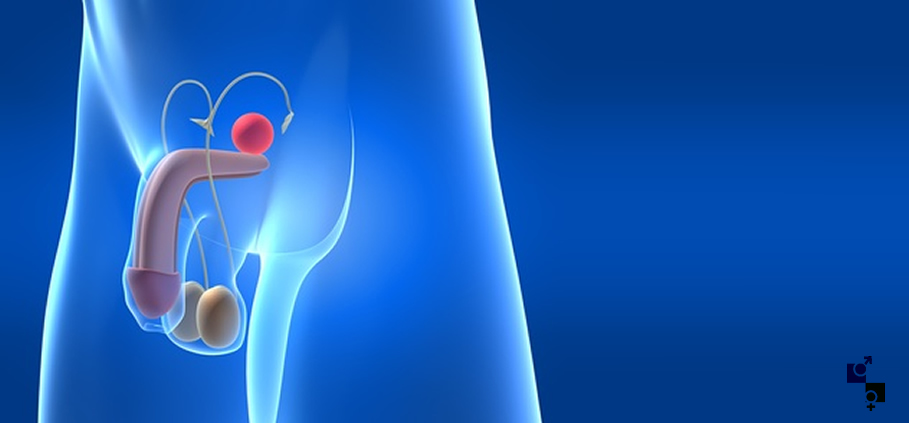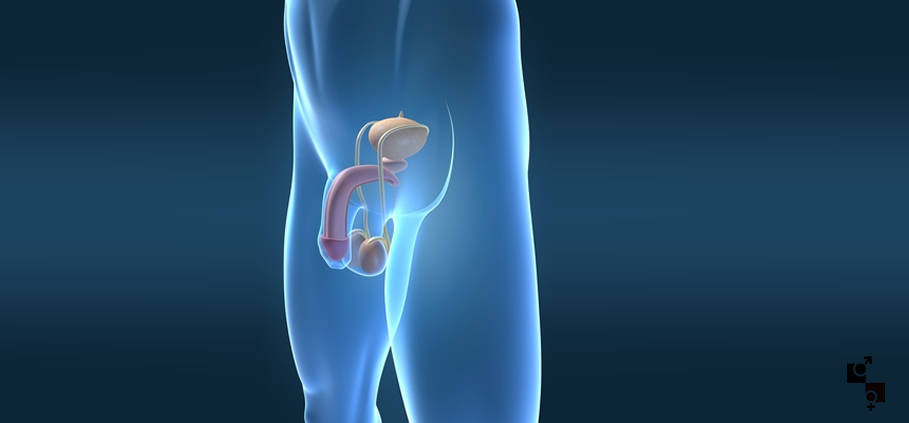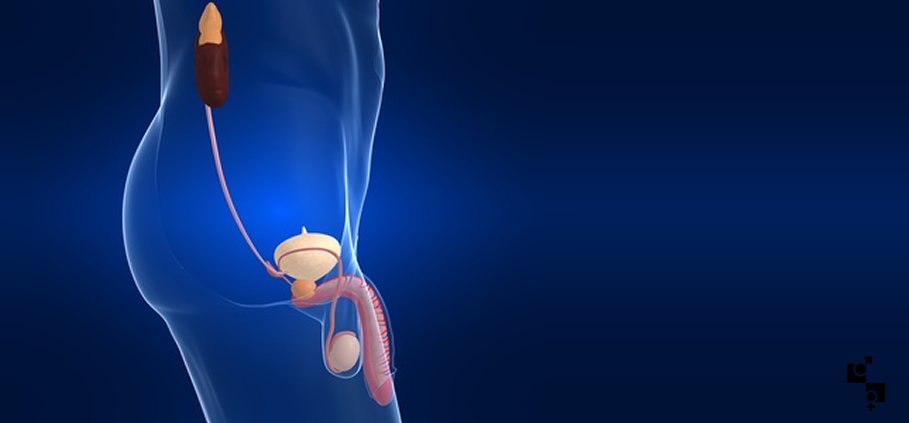Diseases of the Urethra
- Diseases of the Urethra - Men
- •Urethral Stricture
- •Urethral Injuries
- -Anterior Urethra Injuries
- -Posterior Urethra Injuries
- •Congenital Urethral anomalies (anatomical abnormalities)
- -Epispadias
- -Hypospadias
- -Congenital Urethral Valves
- -Urethral Diverticula
- -Double Urethra
- •Inflammations - Infections
- -Urethritis
- >Gonococcal urethritis
- >Non gonococcal urethritis
- •Uretrhal Lithiasis (Calculus)
- Diseases of the Urethra - Women
- •Urethral Stricture
- •Urethral Injuries
- •Congenital Urethral anomalies (anatomical abnormalities)
- -Epispadias
- -Congenital Urethral Valves
- -Urethral Diverticula
- -Double Urethra
- •Inflammations - Infections
- -Urethritis
- >Gonococcal urethritis
- >Non Gonococcal urethritis
(Man)
Congenital Urethral Anomalies(Anatomical abnormalities)
- -Hypospadias - Epispadias
It is the most common congenital abnormality of the penis. In this condition, the urinary meatus (opening) is abnormally located on the ventral aspect of the shaft (the scrotum or the perineum) rather than at the tip of the glans of the penis. It causes problems during urination, difficulty in sexual intercourse which may result to psychological problems. Restoration of hypospadias is achieved with surgical operation and the age of 4 years is consider the most appropriate, because at this age the penis has developed sufficiently and cooperation and communication with the child is more feasible. A similar type of congenital anomaly is “Epispadias” which can be observed to people regardless of sex. In men, the only difference with hypospadias is that the urinary meatus is located on the dorsal aspect of the shaft.
- -Congenital Urethral Valves
The congenital urethral valves cause obstruction of the prostatic urethra. This means that during urination these valves fall on the urethral tube causing valve obstruction of the urethra and allowing urine outlet only through the narrow opening they create. This obstruction results in the appearance of disorders in the operation of the bladder and the kidneys, and, at an older age, of sexual dysfunction. It is one of the severest diseases of pediatric urology. It is observed only in male babies and infants. Its treatment is surgical
- -Urethral Diverticula
The congenital urethral diverticula is a rare condition observed to both boys and girls. They are divided into sacular and spherical and cause urethral obstruction. They must be surgically removed.
- -Double Urethra
Double urethra is a very rare condition. It can be complete or incomplete and in some cases it can be accompanied by duplication of the penis and the urinary bladder. Its treatment is surgical and depends of the type of duplication.
Urethral Stricture
The urethra is the tube through which the urine voids from the bladder. Urethral stricture is a condition when the entire or part of this tube is narrower than normal. This condition can be congenital or acquired after injury or infection of the urethra. Urination disorders, burning sensation and mild pain some of the symptoms. Its treatment is surgical.
Urethral Injuries
Due to the anatomy of the organ, urethral injuries are classified into two categories:
- -Anterior Urethra Injuries
They are caused by external blunt trauma, which can create a blind or open wound, or upon catheterization attempt or permanent catheter placement. The symptoms are urethrorrhagia, blood in the urine or urine retention, and sometimes it can be accompanied by a haematoma on the penis or the perineum. Treatment depends on the condition of the organ and the severity of the injury.
- -Posterior Urethra Injuries
These are usually the result of major blunt traumas of the perineum after motor vehicle collisions or major falls and more rarely caused by perforating wound. The symptoms are urethrorrhagia and hematuria and there usually exists fracture of the pelvic bones. A significant information for the diagnosis of the posterior urethra injury is the condition of the prostate, which is usually detached from its normal position. Treatment of posterior urethra injury depends on the severity of trauma and requires gentle management and great attention before each surgical operation.
Inflammations – Infections “Urethritis” video
- -Gonococcal Urethritis
It is a sexually transmitted disease and is caused by Gram (+) diplococcus, N. Gonorrhoeae. It can also be transmitted through the mouth when the pharynx has been infected. The classic symptoms of the condition are urethral discharge and a burning sensation upon urination. Treatment consists of administration of medication for both partners.
- -Non gonococcal urethritis
It is the commonest sexually transmitted disease. Urethral discharge and dysouria are the commonest symptoms observed. However, the biggest problem of the disease, further to its possible severe complications, is its vast expansion. Its treatment is medication administration, imperative for both partners.
Urethral Lithiasis (Calculus)
Stones usually descended from the upper urinary tract which became lodged in the urethra. Symptoms are intense dysouria and demands immediate treatment. In case the stone is developed in an urethral diverticulum, treatment must be surgical (removal of the diverticulum).
(Woman)
Congenital Urethral Anomalies (Anatomical abnormalities)
- -Epispadias
A congenital urethral anomaly similar to Hypospadias is “Epispadias” and is observed to people regardless of sex.
- -Congenital Urethral Valves
The congenital urethral valves cause obstruction of the prostatic urethra. This means that during urination these valves fall on the urethral tube causing valve obstruction of the urethra and allowing urine outlet only through the narrow opening they create. This obstruction results in the appearance of disorders in the operation of the bladder and the kidneys. It is one of the severest diseases of pediatric urology. It is observed only in male babies and infants. Its treatment is surgical
- -Urethral Diverticula
The congenital urethral diverticula is a rare condition observed to both boys and girls. They are divided into sacular and spherical and cause urethral obstruction. They must be surgically removed.
- -Double Urethra
Double urethra is a very rare condition. It can be complete or incomplete and in some cases it can be accompanied by duplication of the urinary bladder. Its treatment is surgical and depends of the type of duplication.
Urethral Stricture
The urethra is the tube through which the urine voids from the bladder. Urethral stricture is a condition when the entire or part of this tube is narrower than normal. This condition can be congenital or acquired after injury or infection of the urethra. Urination disorders, burning sensation and mild pain some of the symptoms. Its treatment is surgical.
Urethral Injuries
The injuries of the female urethra are milder and usually rarer. This is due to the fact that the female urethra is shorter, mobile and well-protected from external injuries. Traumas may be caused during childbirth or gynecological operations, where there is direct and immediate treatment.
Inflammations – Infections “Urethritis” video
- -Gonococcal Urethritis
It is a sexually transmitted disease and is caused by Gram (+) diplococcus, N. Gonorrhoeae. It can also be transmitted through the mouth when the pharynx has been infected. The classic symptoms of the condition are urethral discharge and a burning sensation upon urination. Treatment consists of administration of medication for both partners. video
- -Non gonococcal urethritis
It is the commonest sexually transmitted disease. Urethral discharge and dysouria are the commonest symptoms observed. However, the biggest problem of the disease, further to its possible severe complications, is its vast expansion. Its treatment is medication administration, imperative for both partners. video



